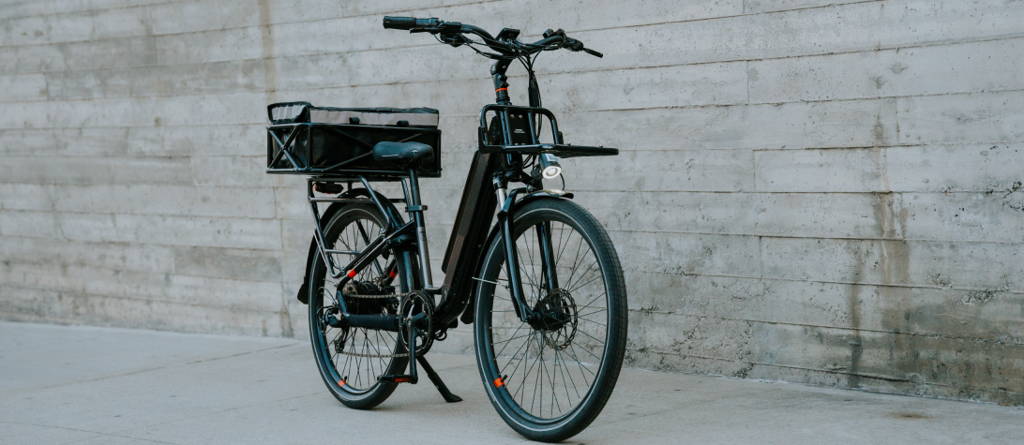Charging an electric bike usually takes 3 to 6 hours. The exact time depends on the battery size and charger type.
Electric bikes are becoming popular for their convenience and eco-friendliness. But, understanding how long does it take to charge an electric bike can be confusing for new users. The charging time can vary based on factors like battery capacity and the type of charger used.
Knowing this information can help you plan your rides better and ensure your bike is ready when you need it. In this post, we will explore the factors that affect charging times for electric bikes. By the end, you’ll have a clear idea of what to expect when charging your electric bike.

Credit: upway.co
Table of Contents
Battery Types
Understanding the different battery types is crucial for knowing how long it takes to charge an electric bike. The type of battery of e-bike uses impacts the charging time. Below, we explore the two most common battery types for electric bikes: Lithium-Ion and Lead-Acid.
Lithium-ion Batteries
Lithium-Ion batteries are the most popular type of e-bike batteries. They are known for their efficiency and lightweight nature. Charging times for Lithium-Ion batteries vary depending on their capacity and the charger used. On average, a Lithium-Ion battery takes about 3 to 6 hours to charge fully.
Here are some key points about Lithium-Ion batteries:
- Lightweight: Easier to handle and install.
- Longer lifespan: Typically lasts between 500 to 1,000 charge cycles.
- Faster charging: Charges faster than other battery types.
For a more detailed comparison, refer to the table below:
| Battery Feature | Lithium-Ion |
|---|---|
| Average Charging Time | 3-6 hours |
| Weight | Lightweight |
| Lifespan | 500-1,000 cycles |
| Charging Efficiency | High |
Lead-acid Batteries
Lead-Acid batteries are an older technology but still used in some electric bikes. They are heavier and less efficient compared to Lithium-Ion batteries. Charging times for Lead-Acid batteries are longer, often taking between 6 to 8 hours to reach full charge.
Key points about Lead-Acid batteries include:
- Heavier: Adds weight to the bike, making it harder to handle.
- Shorter lifespan: Typically lasts between 200 to 300 charge cycles.
- Slower charging: Takes more time to charge compared to Lithium-Ion batteries.
Here is a comparative table for better understanding:
| Battery Feature | Lead-Acid |
|---|---|
| Average Charging Time | 6-8 hours |
| Weight | Heavier |
| Lifespan | 200-300 cycles |
| Charging Efficiency | Low |
Charger Specifications
Understanding charger specifications helps determine how long it takes to charge an electric bike. Different chargers have unique features and capabilities. These variations can significantly impact charging times. Let’s discover the two main types of chargers.
Standard Chargers
Standard chargers are the most common type. They usually have lower power output. This means they charge the battery at a slower pace. Typically, a standard charger outputs between 2 to 4 amps. Charging an electric bike with a standard charger can take 4 to 6 hours. This time frame is suitable for overnight charging or when you are not in a rush.
Fast Chargers
Fast chargers are designed for quicker charging. They have higher power output compared to standard chargers. Fast chargers can output 6 to 8 amps or more. This reduces the charging time significantly. With a fast charger, your electric bike can be fully charged in 1 to 3 hours. Fast chargers are ideal for quick top-ups during the day.
Battery Capacity
The battery capacity of an electric bike plays a crucial role in determining its charging time. It is measured in watt-hours (Wh). A higher capacity means the battery can store more energy, leading to longer rides. But it also impacts how long it takes to charge the battery fully.
Watt-hours Explained
Watt-hours (Wh) indicate the amount of energy a battery can store. It is calculated by multiplying the voltage (V) by the amp-hour (Ah) rating. For instance, a 36V battery with 10Ah has a capacity of 360Wh. Higher watt-hours mean the battery can power the bike for a longer distance.
Impact On Charging Time
The battery capacity directly affects the charging time. Larger capacity batteries take longer to charge. For example, a 500Wh battery will take more time than a 250Wh battery. Charging time also depends on the charger’s power output. A higher wattage charger can reduce the time needed to charge the battery.
Charging Methods
Electric bikes, or e-bikes, offer a convenient way to travel. Charging them efficiently ensures you can enjoy your ride without interruptions. This section covers different charging methods.
Plug-in Charging
Plug-in charging is the most common method for e-bikes. You connect your e-bike to a standard power outlet. The time it takes depends on your battery capacity and charger type. Most e-bike batteries take 3 to 6 hours to fully charge. Fast chargers reduce this time significantly. Always use the charger recommended by your e-bike manufacturer. This ensures safety and prolongs battery life.
Swappable Batteries
Some e-bikes come with swappable batteries. This method lets you replace a drained battery with a charged one. Swapping batteries take just a few minutes. It allows you to keep riding without waiting for a charge. You can charge the spare battery at home or work. This method is great for long commutes or extended trips. It also ensures you always have a backup.
Environmental Factors
Charging an electric bike is influenced by several environmental factors. These factors can affect both the charging time and the overall battery performance. Understanding these elements can help in optimizing the charging process.
Temperature Effects
Temperature has a significant impact on charging efficiency. Extreme temperatures can either slow down or speed up the charging process. For example:
- High temperatures (above 30°C): May cause the battery to overheat, slowing down the charge.
- Low temperatures (below 10°C): Can increase resistance, leading to longer charging times.
Maintaining a moderate temperature range (15°C to 25°C) is ideal for optimal charging performance. It’s advisable to charge your electric bike in a shaded or indoor area to maintain this temperature range.
Altitude Considerations
Altitude can also impact the charging process. At higher altitudes, the air pressure is lower. This can affect the cooling efficiency of the battery. Here’s how it breaks down:
| Altitude | Charging Impact |
|---|---|
| Low Altitude (0 – 1000m) | Minimal impact, optimal charging conditions. |
| Medium Altitude (1000m – 2000m) | Slightly increased charging times due to reduced cooling. |
| High Altitude (2000m+) | Noticeable increase in charging times and potential overheating issues. |
To mitigate altitude effects, ensure your bike’s cooling system is functioning well. Regular maintenance checks can help in this regard.

Credit: fiido.com
Manufacturer Guidelines
Charging an electric bike typically takes 3 to 6 hours. The exact time depends on battery size and charger type. Always refer to the manufacturer’s guidelines for precise charging times.
Understanding how long it takes to charge an electric bike depends on the manufacturer’s guidelines. Each bike brand provides specific instructions. Following these instructions ensures your bike runs efficiently. It also helps prolong the life of the battery.
Recommended Charging Practices
Manufacturers often suggest charging the battery after every ride. This keeps the battery healthy and ready for use. Avoid letting the battery drain completely. Partial charging is better for the battery’s lifespan. Use the charger that came with your bike. Third-party chargers can damage the battery.
Warranty And Safety
Most manufacturers offer a warranty on the battery. Following the recommended charging practices keeps the warranty valid. If you use improper charging methods, the warranty might become void. Safety is another key concern. Avoid charging the bike in very hot or cold places. Extreme temperatures can harm the battery. Always charge the bike in a dry, well-ventilated area.
Practical Tips
Charging an electric bike can be a bit confusing for beginners. There are ways to make this process faster and more efficient. Here are some practical tips to help you optimize charging time and maintain battery health.
Optimizing Charging Time
To reduce charging time, use the charger that came with your bike. Different chargers deliver power at different rates. A high-quality charger ensures faster charging.
Charge your bike in a cool, dry place. High temperatures can slow down charging. Avoid charging in direct sunlight or hot environments.
Keep your battery at room temperature before charging. If the battery is too cold or too hot, it will charge slower. This simple step can save you time.
Maintaining Battery Health
Always use the charger provided by the manufacturer. Third-party chargers can damage the battery. They may not provide the correct power levels.
Do not let your battery drain completely. Charge it when it reaches around 20-30%. This helps prolong battery life.
Avoid overcharging your battery. Unplug it once it’s fully charged. Overcharging can degrade the battery over time.
Store your bike in a cool, dry place. Extreme temperatures can harm the battery. Both high and low temperatures are bad.

Credit: retrospec.com
Frequently Asked Questions
How Long Does It Take to Charge an Electric Bike Fully?
Charging an electric bike usually takes 3 to 6 hours. The time depends on the battery capacity and charger type.
Can I Use A Fast Charger For My E-bike?
Yes, you can use a fast charger. However, always check your bike’s specifications to ensure compatibility and avoid damage.
How To Know When My E-bike Is Fully Charged?
Most electric bikes have an indicator light. It will turn green or stop blinking once the battery is fully charged.
Does Charging Time Affect E-bike Battery Life?
Yes, frequent fast charging can reduce battery life. It’s best to use the recommended charger for optimal battery health.
Conclusion
Charging an electric bike varies depending on battery size and charger type. Generally, it takes 3-6 hours. Faster chargers reduce this time. Always check your bike’s manual for specific details. Efficient charging ensures longer battery life. Regular maintenance helps too.
Now you know the basics. Enjoy your rides!

